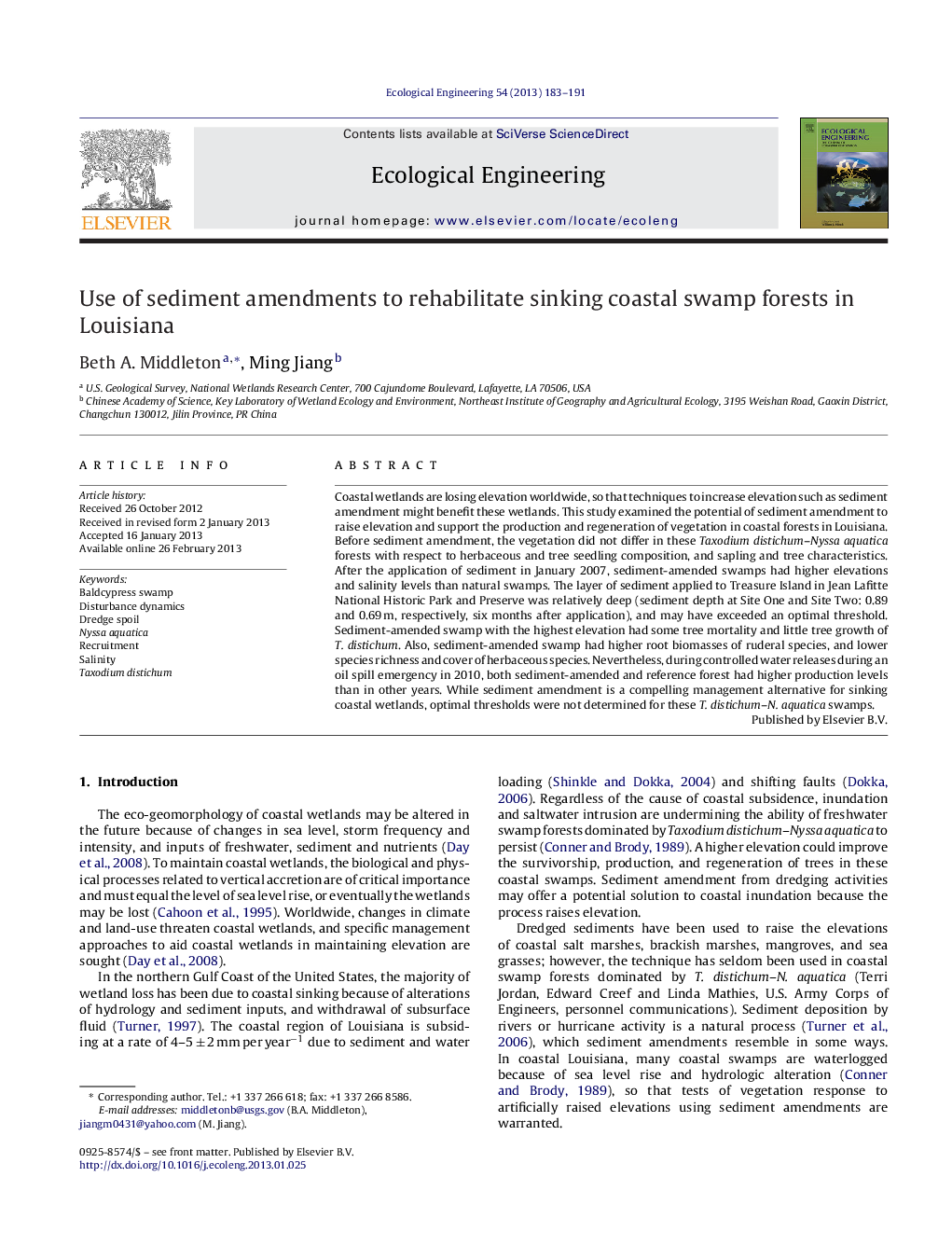| Article ID | Journal | Published Year | Pages | File Type |
|---|---|---|---|---|
| 4389807 | Ecological Engineering | 2013 | 9 Pages |
Abstract
Coastal wetlands are losing elevation worldwide, so that techniques to increase elevation such as sediment amendment might benefit these wetlands. This study examined the potential of sediment amendment to raise elevation and support the production and regeneration of vegetation in coastal forests in Louisiana. Before sediment amendment, the vegetation did not differ in these Taxodium distichum-Nyssa aquatica forests with respect to herbaceous and tree seedling composition, and sapling and tree characteristics. After the application of sediment in January 2007, sediment-amended swamps had higher elevations and salinity levels than natural swamps. The layer of sediment applied to Treasure Island in Jean Lafitte National Historic Park and Preserve was relatively deep (sediment depth at Site One and Site Two: 0.89 and 0.69Â m, respectively, six months after application), and may have exceeded an optimal threshold. Sediment-amended swamp with the highest elevation had some tree mortality and little tree growth of T. distichum. Also, sediment-amended swamp had higher root biomasses of ruderal species, and lower species richness and cover of herbaceous species. Nevertheless, during controlled water releases during an oil spill emergency in 2010, both sediment-amended and reference forest had higher production levels than in other years. While sediment amendment is a compelling management alternative for sinking coastal wetlands, optimal thresholds were not determined for these T. distichum-N. aquatica swamps.
Related Topics
Life Sciences
Agricultural and Biological Sciences
Ecology, Evolution, Behavior and Systematics
Authors
Beth A. Middleton, Ming Jiang,
